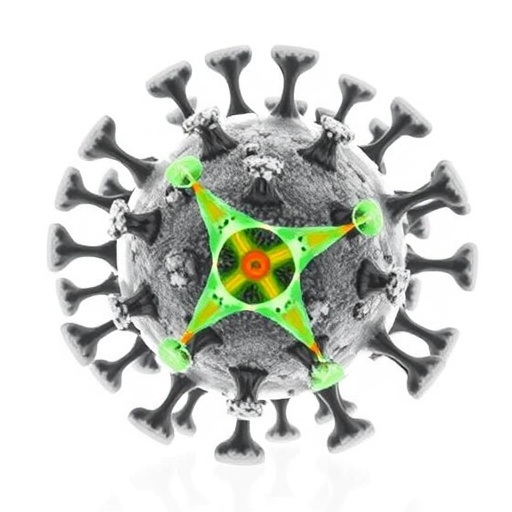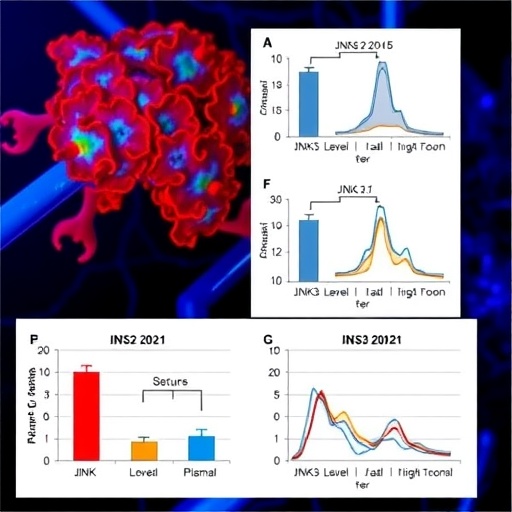In a groundbreaking leap forward for antiviral drug development, researchers have unveiled a novel covalent inhibitor that shows broad-spectrum efficacy against the main protease (M^pro) of human coronaviruses. This breakthrough illuminates a promising pathway toward universal antiviral therapies that could decisively curtail the threat posed by not only the current SARS-CoV-2 virus but also future emergent coronavirus strains. The study, conducted by Sun, J., Sun, D., Yang, Q., and colleagues, and published in Nature Communications, details the molecular design, mechanism of action, and preclinical validation of this innovative inhibitor, marking a critical advance in the ongoing battle against viral pandemics.
The viral main protease M^pro is a pivotal enzyme in the coronavirus lifecycle, responsible for cleaving the polyprotein translated from viral RNA into functional units necessary for replication. Due to its essential function and high conservation across coronavirus species, M^pro represents an exceptionally attractive target for antiviral intervention. Unlike other viral enzymes subject to frequent mutations that may facilitate drug resistance, M^pro maintains a conserved active site architecture, rendering it susceptible to inhibitors that can broadly target multiple coronavirus strains. The research team’s focus on a covalent modification strategy aimed to forge a durable and irreversible bond with the enzyme’s active site cysteine residue, thereby ensuring sustained protease inhibition.
The central innovation lies in the synthesis of a covalent inhibitor featuring a reactive electrophilic warhead, precisely engineered to engage the catalytic cysteine of M^pro. The design process was intricately guided by structure-based drug design principles, utilizing high-resolution crystallographic data of M^pro bound to known substrates and inhibitors. By iteratively optimizing the molecular scaffold for both potent binding affinity and appropriate reactivity, the team crafted a compound that achieves a fine balance—highly reactive toward the target cysteine without incurring off-target toxicity associated with indiscriminate covalent binding.
Structural biology provided profound insights into the inhibitor-protease interaction, as X-ray crystallography revealed covalent linkage between the inhibitor’s electrophilic moiety and the sulfur atom of cysteine 145, the catalytic residue in M^pro. The inhibitor was shown to snugly fit into the substrate-binding pocket, engaging in multiple non-covalent interactions that bolster binding stability. This dual mode of covalent and non-covalent engagement likely accounts for the inhibitor’s remarkable potency and enduring suppression of protease activity, a vital feature for thwarting viral replication within infected host cells.
To assess antiviral efficacy, the research advanced into cellular models infected with live human coronaviruses. Treatment with the covalent inhibitor resulted in marked reduction of viral replication and cytopathic effects across multiple coronavirus strains. Dose-response studies confirmed effective viral suppression at pharmacologically achievable concentrations, reinforcing the compound’s promise as a therapeutic candidate. The inhibitor’s broad activity spectrum offers a strategic advantage, potentially circumventing the pitfalls of narrow-spectrum antivirals that are vulnerable to viral mutations.
Beyond monotherapy use, the newly discovered inhibitor may synergize with existing antiviral agents targeting other viral proteins such as the RNA-dependent RNA polymerase or spike protein. Combination regimens could reduce the likelihood of resistance development and enhance therapeutic outcomes, particularly in severely ill or immunocompromised patients. Given the recurring emergence of novel coronaviruses, a broad-spectrum M^pro inhibitor stands to become a cornerstone of pandemic preparedness, enabling rapid deployment against diverse viral threats.
Pharmacokinetic and safety profiling in animal models further supported the inhibitor’s translational potential. The compound demonstrated favorable absorption, distribution, metabolism, and excretion (ADME) characteristics, coupled with low toxicity at efficacious doses. These data underpin anticipated good tolerability in human subjects, a prerequisite for clinical advancement. Ongoing efforts are directed toward formulation optimization and regulatory engagement, aiming to expedite clinical trials and leverage this molecular innovation for public health impact.
The drug discovery strategy exemplified in this work underscores the significance of covalent inhibition as a durable and effective antiviral modality. Covalent inhibitors, once overshadowed due to concerns over irreversible binding and off-target effects, are witnessing a renaissance supported by precise design and rigorous selectivity profiling. This study contributes to the growing body of evidence that thoughtfully engineered covalent inhibitors can combine potency, breadth, and safety, reshaping antiviral pharmacotherapy paradigms.
Future research directions include expanding the inhibitor’s activity validation against emerging coronavirus variants and exploring its prophylactic potential. Preventive use in high-risk populations or frontline healthcare workers could substantially mitigate viral transmission chains. Furthermore, exploration of inhalable formulations could target the primary sites of coronavirus infection within the respiratory tract, enhancing local drug concentrations and clinical efficacy.
In the broader antiviral landscape, the success of this covalent broad-spectrum M^pro inhibitor could catalyze analogous strategies against other viral proteases, including those of flaviviruses, filoviruses, and picornaviruses. Such cross-family inhibitor design may pave the way for universal antiviral platforms, capable of rapid customization and deployment in response to new outbreaks or biothreats.
As the scientific community grapples with the persistent challenges of viral evolution and drug resistance, innovations such as this represent critical milestones. The robust inhibitory activity combined with the broad-spectrum nature of this M^pro covalent inhibitor conveys renewed optimism that humanity’s pandemic preparedness and response capabilities are advancing. The integration of structural biology, medicinal chemistry, and preclinical virology exemplifies the multidisciplinary collaboration essential for success in this domain.
In summary, the discovery and characterization of this novel covalent broad-spectrum inhibitor targeting human coronavirus M^pro stands as a paradigm-shifting achievement. It holds immense promise to bolster the antiviral armamentarium, potentially transforming coronavirus disease management and bolstering defenses against future pandemics. The integration of covalent inhibition strategies with broad-spectrum activity sets a new standard for antiviral drug design, renewing hope in our collective ability to outpace viral pathogens through scientific ingenuity.
—
Subject of Research: Novel covalent broad-spectrum inhibitor targeting the main protease (M^pro) of human coronaviruses.
Article Title: A novel, covalent broad-spectrum inhibitor targeting human coronavirus M^pro
Article References:
Sun, J., Sun, D., Yang, Q. et al. A novel, covalent broad-spectrum inhibitor targeting human coronavirus Mpro.
Nat Commun 16, 4546 (2025). https://doi.org/10.1038/s41467-025-59870-4
Image Credits: AI Generated
Tags: broad-spectrum antiviral inhibitorscombating viral pandemicscoronavirus main protease inhibitorscovalent inhibitors for coronavirusesdrug resistance in antiviral therapyinnovative antiviral drug developmentmechanisms of action of protease inhibitorsmolecular design of antiviral compoundspreclinical validation of antiviral drugsSARS-CoV-2 treatment advancementstargeting conserved viral enzymesuniversal antiviral therapies





